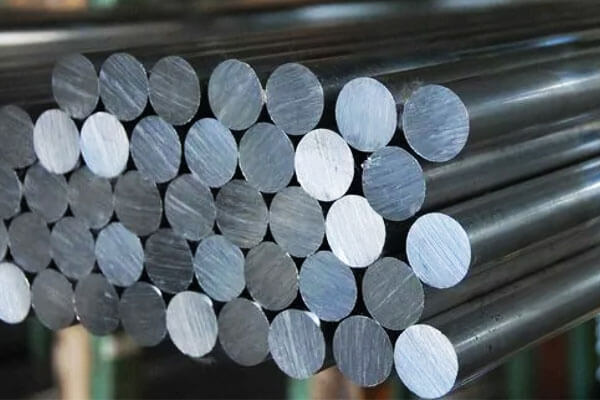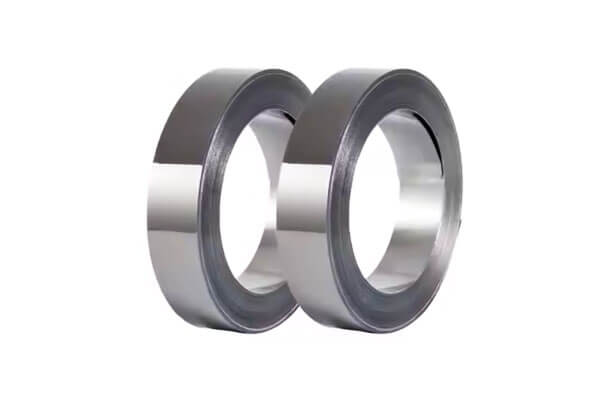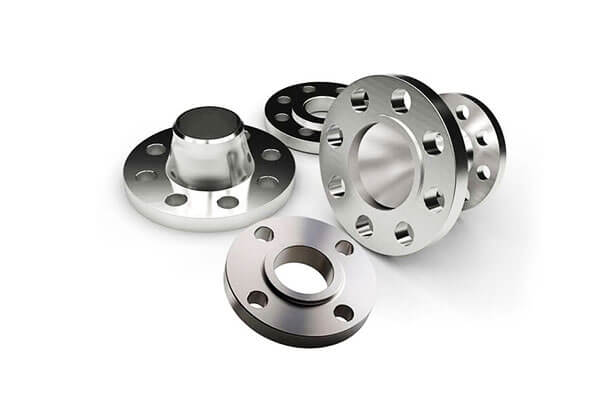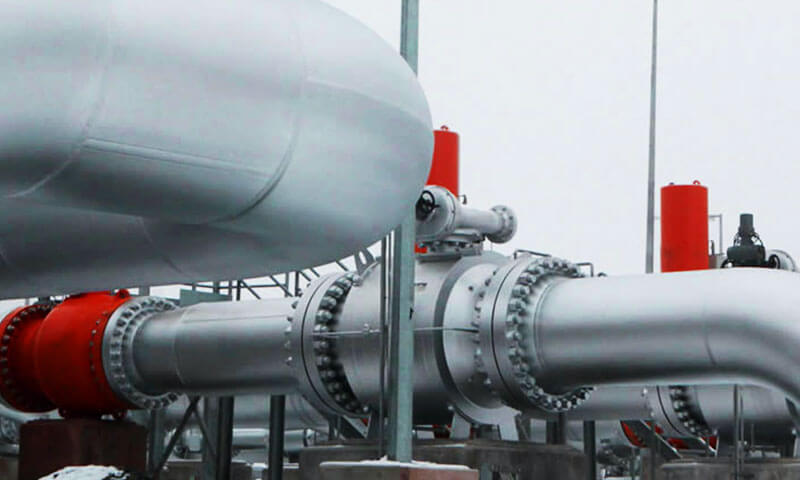1. Introduzzjoni
Ligi bbażati fuq in-nikil ilhom il-pedament ta 'materjali ta' prestazzjoni għolja użati f'ambjenti estremi.
Il-ħila tagħhom li jifilħu temperaturi għoljin, ossidazzjoni, u stress mekkaniku jagħmilhom indispensabbli fil aerospazjali, Ġenerazzjoni tal-Enerġija, u applikazzjonijiet industrijali.
Fost dawn il-ligi, Liga tan-nikil 75 (2.4951) kiseb reputazzjoni għal tagħha stabbiltà termali eċċezzjonali, Reżistenza tal-creep, u reżistenza għall-korrużjoni
Oriġinarjament żviluppati fl- 1940s għall-Whittle jet engine turbini blades, din il-liga kompliet tipprova tagħha affidabbiltà u versatilità madwar industriji multipli.
Il-kombinazzjoni unika tagħha ta ' Qawwa mekkanika, Stabbiltà termali, u faċilità ta 'fabbrikazzjoni jagħmilha għażla attraenti għall-applikazzjonijiet li jeħtieġu durabilità fit-tul f'ambjenti ta 'temperatura għolja.
Dan l-artikolu jipprovdi an analiżi teknika fil-fond tan-Nikil Alloy 75 (2.4951), kisi:
- Kompożizzjoni kimika u mikrostruttura, jispjega kif kull element jikkontribwixxi għall-proprjetajiet superjuri tiegħu.
- Fiżiku, termali, u karatteristiċi mekkaniċi, tagħti dettalji tal-prestazzjoni tagħha taħt kundizzjonijiet estremi.
- Tekniki tal-manifattura u sfidi tal-ipproċessar, jenfasizzaw l-aħjar metodi ta 'fabbrikazzjoni.
- Applikazzjonijiet industrijali u fattibbiltà ekonomika, juri l-użu mifrux tiegħu.
- Xejriet futuri u avvanzi teknoloġiċi, tesplora l-fażi li jmiss ta 'żvilupp tal-liga.
Sa tmiem din id-diskussjoni, il-qarrejja se jkollhom a fehim komprensiv tal-Liga 75 u għaliex jibqa’ a materjal preferut għal applikazzjonijiet ta' inġinerija eżiġenti.
2. Kompożizzjoni kimika u mikrostruttura
Kostitwenti Primarji u l-Funzjonijiet Tagħhom
Liga tan-nikil 75 (2.4951) huwa a liga tan-nikil-kromju iddisinjat għal applikazzjonijiet moderati f'temperatura għolja.

It-tabella li ġejja tiddeskrivi l-elementi ewlenin tal-liga tagħha u l-kontribuzzjonijiet tagħhom għall-prestazzjoni materjali:
| Element | Kompożizzjoni (%) | Funzjoni |
|---|---|---|
| Nickel (Fi) | Bilanċ (~75.0%) | Jipprovdi reżistenza għall-ossidazzjoni u l-korrużjoni, jiżgura stabbiltà termali. |
| Kromju (Cr) | 18.0–21.0% | Ittejjeb ir-reżistenza għall-ossidazzjoni u l-iskala, isaħħaħ il-liga. |
| Titanju (Ta ') | 0.2–0.6% | Stabbilizza l-karburi, itejjeb is-saħħa f'temperatura għolja. |
| Karbonju (Ċ) | 0.08–0.15% | Jifforma karburi biex itejbu l-ebusija u r-reżistenza għat-tkaxkir. |
| Ħadid (Fe) | ≤5.0% | Iżżid is-saħħa mekkanika mingħajr ma tikkomprometti r-reżistenza għall-korrużjoni. |
| Silikon (U), Manganiż (Mn), Ram (Cu) | ≤1.0%, ≤1.0%, ≤0.5% | Ipprovdi benefiċċji minuri tal-ipproċessar u reżistenza għall-ossidazzjoni. |
Analiżi Mikrostrutturali
- Il FCC (Kubu Iċċentrat fuq il-wiċċ) struttura tal-kristall jiżgura għoli duttilità u toughness tal-ksur, li huwa essenzjali għall-applikazzjonijiet taċ-ċikliżmu termali.
- It-titanju u l-karbonju jiffurmaw karburi (TiC, Cr₇C₃), iżżid b'mod sinifikanti s-saħħa tal-creep tal-liga f'temperaturi elevati.
- Eżami mikroskopiku (Min, TEM, u analiżi XRD) jikkonferma li strutturi uniformi tal-qamħ jikkontribwixxu għal reżistenza mtejba għall-għeja.
3. Proprjetajiet Fiżiċi u Termali
Proprjetajiet Fiżiċi Bażiċi
- Densità: 8.37 g / cm³
- Firxa tat-tidwib: 1340–1380°C
- Reżistività elettrika: 1.09 mm²/m (ogħla mill-istainless steel, jagħmilha ideali għal elementi li jsaħħnu)
Karatteristiċi Termali
| Proprjetà | Valur | Sinifikat |
|---|---|---|
| Konduttività termali | 11.7 W/m·°C | Jiżgura dissipazzjoni effiċjenti tas-sħana f'ambjenti b'temperatura għolja. |
| Kapaċità speċifika tas-sħana | 461 J/kg·°C | Ittejjeb l-istabbiltà termali. |
| Koeffiċjent ta 'espansjoni termali (CTE) | 11.0 µm/m·°C (20–100 ° C.) | Iżomm l-integrità strutturali taħt iċ-ċikliżmu termali. |
Reżistenza għall-ossidazzjoni u Stabbiltà Termali
- Isostni reżistenza għall-ossidazzjoni sa 1100 ° C, jagħmilha ideali għal turbini tal-gass u sistemi ta 'exhaust.
- Iżomm is-saħħa mekkanika taħt espożizzjoni fit-tul għal temperatura għolja, jitnaqqas ir-riskju ta 'deformazzjoni.
Propjetajiet manjetiċi
- Permeabilità manjetika baxxa (1.014 fi 200 Oersted) jiżgura l-adegwatezza għal applikazzjonijiet li jeħtieġu interferenza elettromanjetika minima.
4. Proprjetajiet Mekkaniċi u Prestazzjoni f'Temperatura Għolja tal-Liga tan-Nikil 75
Din it-taqsima tipprovdi analiżi komprensiva tan-Nikil Alloy 75 Propjetajiet mekkaniċi, imġieba taħt kundizzjonijiet estremi, u metodoloġiji ta' ttestjar biex tevalwa l-prestazzjoni fit-tul tagħha.
Qawwa tat-tensjoni, Saħħa tar-rendiment, u Titwil
Il-proprjetajiet tat-tensjoni jiddefinixxu l-abbiltà tal-liga li tiflaħ tagħbija statika u dinamika mingħajr ma jesperjenzaw deformazzjoni jew falliment permanenti.
Liga tan-nikil 75 iżomm saħħa tensili għolja u ductility raġonevoli tul firxa wiesgħa ta’ temperatura.

Proprjetajiet Tensili Ewlenin
| Temperatura (° C.) | Qawwa tat-tensjoni (MPA) | Saħħa tar-rendiment (MPA) | Titwil (%) |
|---|---|---|---|
| Temp tal-Kamra (25° C.) | ~600 | ~275 | ~40 |
| 760° C. | ~380 | ~190 | ~ 25 |
| 980° C. | ~120 | ~60 | ~10 |
Osservazzjonijiet:
- Qawwa għolja f'temperatura tal-kamra jiżgura kapaċità eċċellenti li ġġorr it-tagħbija.
- Tnaqqis gradwali fis-saħħa tat-tensjoni maż-żieda fit-temperatura huwa mistenni minħabba effetti ta' trattib.
- Id-duttilità tibqa' biżżejjed f'temperaturi elevati, li tippermetti distribuzzjoni mill-ġdid tal-istress mingħajr falliment fraġli.
Dawn il-proprjetajiet jagħmlu Liga tan-nikil 75 adattat għal komponenti esposti għal temperaturi għoljin u stress mekkaniku, bħal xfafar tat-turbini, kanali ta' l-egżost, u partijiet tal-iskambjatur tas-sħana.
Reżistenza għat-tkessiq u Stabbiltà fit-Tagħbija fit-Tul
Creep huwa fattur kritiku għall-materjali użati fil applikazzjonijiet kontinwi f'temperatura għolja. Jirreferi għal il-mod, deformazzjoni dipendenti fuq il-ħin taħt stress kostanti.
Il-ħila li tirreżisti creep tiddetermina l- lonġevità u affidabilità tal-Liga 75 f'ambjenti estremi.
Dejta dwar il-Prestazzjoni tal-Creep
| Temperatura (° C.) | Stress (MPA) | Ħin biex 1% Creep Strain (sigħat) |
|---|---|---|
| 650° C. | 250 | ~10,000 |
| 760° C. | 150 | ~8,000 |
| 870° C. | 75 | ~5,000 |
Intuwizzjonijiet Ewlenin:
- Reżistenza qawwija għal creep f'temperaturi moderati (650–760°C) testendi l-ħajja tal-komponenti f'magni bil-ġett u turbini tal-impjanti tal-enerġija.
- Fi 870°C, rata creep tiżdied b'mod sinifikanti, jeħtieġu kunsiderazzjonijiet bir-reqqa tad-disinn għal espożizzjoni fit-tul.
- Liga 75 jaqbeż l-istainless steel konvenzjonali, jagħmilha għażla aktar affidabbli għal applikazzjonijiet ta 'inġinerija f'temperatura għolja.
Biex tkompli ittejjeb ir-reżistenza għat-tkaxkir, manifatturi spiss jottimizza d-daqs tal-qamħ u jwettaq trattamenti tas-sħana kkontrollati, tiżgura stabbiltà mikrostrutturali waqt użu fit-tul.
Qawwa tal-Għeja u Toughness tal-Ksur
Reżistenza għall-Għeja Taħt Tagħbija Ċiklika
Huwa tħassib kbir fil-komponenti soġġetti għal ċikliżmu termali ripetut u stress mekkaniku, bħal dawk fil sistemi ta' propulsjoni aerospazjali u turbini tal-gass.
Liga 75 esebiti reżistenza qawwija għall-għeja, jipprevjenu falliment prematur minħabba tagħbija ċiklika.
| Temperatura (° C.) | Stress Amplitudità (MPA) | Ċikli għal Falliment (x10⁶) |
|---|---|---|
| Temp tal-Kamra (25° C.) | 350 | ~10 |
| 650° C. | 250 | ~6 |
| 760° C. | 180 | ~4 |
Mekkanika tal-Ksur u Propagazzjoni tal-Xquq
Nikil Alloy 75's it-toughness tal-ksur hija relattivament għolja, prevenzjoni falliment katastrofiku minħabba l-bidu u l-propagazzjoni tal-qsim.
Madankollu, difetti mikrostrutturali, preċipitazzjoni tal-karbur, u espożizzjoni termali fit-tul jistgħu jinfluwenzaw ir-rati tat-tkabbir tal-qsim.
- Modi ta 'ksur intergranulari u transgranulari ġew osservati fl-ittestjar tal-għeja, jiddependi fuq temperatura u livelli ta' stress.
- Tekniki ottimizzati għat-tisħiħ tal-konfini tal-qamħ (permezz ta 'rati ta' tkessiħ ikkontrollati u żidiet minuri ta 'liga) ittejjeb reżistenza għall-qsim.
Stabbiltà Termali u Reżistenza għall-Ossidazzjoni
Liga tan-nikil 75 hija mfassla għal reżistenza għall-ossidazzjoni sa 1100°C, jagħmilha adattata għall-komponenti fil ambjenti ta' kombustjoni u reatturi b'temperatura għolja.
Proprjetajiet Termali Ewlenin
| Proprjetà | Valur | Sinifikat |
|---|---|---|
| Konduttività termali | 11.7 W/m·°C | Jippermetti d-dissipazzjoni tas-sħana f'applikazzjonijiet b'temperatura għolja. |
| Kapaċità speċifika tas-sħana | 461 J/kg·°C | Jiżgura stabbiltà termali. |
| Limitu ta' Ossidazzjoni | 1100° C. | Jipprovdi protezzjoni eċċellenti tal-wiċċ. |
| Koeffiċjent ta 'espansjoni termali (20–100 ° C.) | 11.0 µm/m·°C | Inaqqas l-istress termali waqt iċ-ċikli tat-tisħin u t-tkessiħ. |
Ossidazzjoni u Stabbiltà tal-wiċċ
- Kromju (18–21%) jifforma saff ta' ossidu stabbli, il-protezzjoni tal-liga minn degradazzjoni f'temperatura għolja.
- Kontenut baxx ta 'kubrit u fosfru jimminimizza l-fraġilità fl-applikazzjonijiet taċ-ċikli termali.
- Kompatibbli mal-kisi tal-barriera termali (TBCs) u kisjiet aluminizzati biex ittejjeb aktar ir-reżistenza għall-ossidazzjoni.
5. Teknoloġiji tal-Manifattura u l-Ipproċessar tal-Liga tan-Nikil 75
Ligi tan-nikil – Liga 75 tintuża ħafna f'applikazzjonijiet ta 'temperatura għolja,
jeħtieġu preċiżi tekniki ta' manifattura u pproċessar biex iżomm tagħha integrità mekkanika, Stabbiltà termali, u reżistenza għall-ossidazzjoni.
Din it-taqsima tesplora l- metodi ta' fabbrikazzjoni primarji, proċeduri ta 'trattament tas-sħana, sfidi tal-iwweldjar,
u teknoloġiji tal-irfinar tal-wiċċ li jtejbu l-prestazzjoni tal-liga f'ambjenti eżiġenti.
Tekniki Primarji tal-Fabbrikazzjoni
Manifattura Liga tan-nikil 75 komponenti jinvolvi ikkastjar, Forġa, rolling, u makkinar, kull wieħed b'benefiċċji speċifiċi skond l-applikazzjoni.
Ikkastjar
- Ikkastjar ta 'investiment huwa komunement użat biex jipproduċi komponenti aerospazjali kumplessi, Xfafar tat-turbina, u partijiet tal-egżost.
- Tidwib tar-ramel u ikkastjar ċentrifugali huma preferuti għal forn industrijali fuq skala kbira u komponenti ta 'skambjatur tas-sħana.
- Sfidi: Is-solidifikazzjoni f'temperatura għolja tista 'twassal għal porożità li tinxtorob, jeħtieġu kontroll ta 'preċiżjoni tar-rati tat-tkessiħ.
Forġa u Rolling
- Il-forġa sħuna ttejjeb l-istruttura tal-qamħ u l-proprjetajiet mekkaniċi, jagħmilha ideali għal komponenti li jifilħu t-tagħbija.
- Irrumblar kiesaħ jintuża għall-manifattura ta 'folji u strixxi rqaq, tiżgura ħxuna uniformi u finitura tal-wiċċ.
- Benefiċċji:
-
- Irfina l-istruttura tal-qamħ → Ittejjeb is-saħħa mekkanika.
- Inaqqas id-difetti interni → Ittejjeb ir-reżistenza għall-għeja.
- Ittejjeb il-ħidma → Jipprepara liga għall-magni sussegwenti.
Karatteristiċi tal-Maċinazzjoni
Liga tan-nikil 75 jippreżenta moderat magni diffikultà minħabba tagħha rata għolja ta 'twebbis tax-xogħol u toughness.
| Proprjetà tal-Maċinazzjoni | Effett fuq l-Ipproċessar |
|---|---|
| Aħdem twebbis | Il-veloċitajiet tat-tqattigħ għandhom jiġu ottimizzati biex jimminimizzaw l-użu tal-għodda. |
| Konduttività termali (Baxx) | Jiġġenera sħana eċċessiva waqt il-magni. |
| Formazzjoni taċ-Ċippa | Jeħtieġ għodod tal-qtugħ li jaqtgħu b'reżistenza termali għolja. |
L-Aħjar Prattiċi tal-Maċinazzjoni:
- Uża għodod tal-qtugħ tal-karbur jew taċ-ċeramika biex timmaniġġja t-toughness tal-liga.
- Jimpjega sistemi li jkessaħ bi pressjoni għolja biex timmaniġġja l-akkumulazzjoni tas-sħana.
- Ottimizza veloċitajiet tat-tqattigħ (30–50 m/I) u r-rati tal-għalf biex jipprevjenu t-twebbis tax-xogħol.

Trattament tas-Sħana u Ipproċessar Termali
It-trattament bis-sħana jinfluwenza b'mod sinifikanti l- Propjetajiet mekkaniċi, reżistenza għall-istress, u stabbiltà mikrostrutturali tan-Nikil Alloy 75.
Proċessi ewlenin tat-Trattament tas-Sħana
| Proċess | Temperatura (° C.) | Skop |
|---|---|---|
| Ttremprar | 980–1065°C | Ittaffi l-materjal, ittaffi l-istress, u jtejjeb il-ħidma. |
| Trattament tas-Soluzzjoni | 980–1080°C | Dewweb il-preċipitati tal-karbur, omoġenizza l-mikrostruttura. |
| Tixjiħ | 650–760°C | Ittejjeb ir-reżistenza għat-tkaxkir u s-saħħa tat-temperatura għolja. |
Vantaġġi tat-Trattament tas-Sħana:
- Ittejjeb ir-raffinament tal-qamħ, ittejjeb is-saħħa tal-għeja.
- Inaqqas it-tensjonijiet residwi interni, jimminimizzaw id-distorsjoni fil-komponenti.
- Ittejjeb ir-reżistenza għat-tkaxkir, li tiżgura l-lonġevità f'applikazzjonijiet ta 'temperatura għolja.
Proċeduri ta' Iwweldjar u Tgħaqqid
Liga tan-nikil 75 jistgħu jiġu wweldjati bl-użu ta ' metodi varji, Iżda tikkontrolla l-input tas-sħana u tipprevjeni l-preċipitazzjoni tal-karbur hija kruċjali biex tinżamm l-integrità mekkanika.
Sfidi tal-Iwweldjar:
- Riskju tal-qsim: Żidiet ta 'espansjoni termali għolja stress residwu u suxxettibilità ta 'qsim sħun.
- Sensittività ta' Ossidazzjoni: Jeħtieġ ilqugħ tal-gass inert (Argon, Elju) biex tiġi evitata l-kontaminazzjoni tal-wiċċ.
- Preċipitazzjoni tal-karbur: Input eċċessiv tas-sħana jista 'jwassal għal formazzjoni ta' karbur, tnaqqis tad-duttilità u toughness.
Metodi Rakkomandati tal-Iwweldjar:
| Proċess tal-Iwweldjar | Vantaġġi | Sfidi |
|---|---|---|
| Iwweldjar TIG (Gtaw) | Kontroll preċiż, input minimu tas-sħana | Aktar bil-mod minn MIG, teħtieġ operazzjoni tas-sengħa. |
| Iwweldjar MIG (Gawn) | Depożizzjoni aktar mgħaġġla, tajba għal sezzjonijiet ħoxnin | Input ogħla tas-sħana jista 'jwassal għal preċipitazzjoni tal-karbur. |
| Iwweldjar tar-raġġ tal-elettroni (EMS) | Penetrazzjoni profonda, distorsjoni termika minima | Spiża għolja tat-tagħmir. |
✔ L-Aħjar Prattika: Trattament tas-sħana wara l-weldjatura (Pwht) fi 650–760°C to ittaffi l-istress residwu u tevita l-qsim.
Trattamenti tal-wiċċ u Kisi
Trattamenti tal-wiċċ ittejjeb Reżistenza għall-ossidazzjoni, Reżistenza għall-korrużjoni, u reżistenza mekkanika għall-ilbies, speċjalment għall-komponenti fil ambjenti estremi.
Kisi reżistenti għall-ossidazzjoni
- Aluminizing: Jifforma saff protettiv Al₂O₃, titjib reżistenza għall-ossidazzjoni sa 1100°C.
- Kisi ta' Ostakoli Termali (TBCs): Żirkonja stabilizzata bl-yttria (YSZ) kisjiet jipprovdu insulazzjoni termali f'magni bil-ġett.
Protezzjoni mill-Korrużjoni
- Elettropolizzazzjoni: Ittejjeb l-intoppi tal-wiċċ, it-tnaqqis tal-konċentraturi tal-istress.
- Plating tan-nikil: Ittejjeb ir-reżistenza għall-korrużjoni fi applikazzjonijiet għall-ipproċessar tal-baħar u kimiku.
Kisi Reżistenti għall-Ilbes
- Kisi bl-isprej tal-plażma: Żid a saff taċ-ċeramika jew tal-karbur, tnaqqis tad-degradazzjoni tal-wiċċ fi ambjenti ta' frizzjoni għolja.
- Nitriding tal-jone: Jibbies il-wiċċ għal reżistenza aħjar għall-ilbies u l-għeja.
✔ L-Aħjar Prattika: Għażla ta 'kisi bbażati fuq ambjent operattiv (temperatura, stress mekkaniku, u espożizzjoni kimika) jiżgura durabilità massima.
Kontroll tal-Kwalità u Metodi ta' Ittestjar
Biex iżżomm prestazzjoni għolja u affidabilità, Liga tan-nikil 75 komponenti jgħaddu proċeduri stretti ta 'kontroll tal-kwalità.
Ittestjar mhux Distruttiv (Ndt)
- Spezzjoni bir-raġġi X: Jiskopri porożità interna u vojt f'komponenti fonduti jew iwweldjati.
- Ittestjar ultrasoniku (Ut): Jevalwa d-difetti taħt il-wiċċ mingħajr ma jagħmel ħsara lill-materjal.
- Spezzjoni Penetrant taż-Żebgħa (DPI): Jidentifika xquq tal-wiċċ fix-xfafar tat-turbini u partijiet aerospazjali.
Analiżi Mikrostrutturali
- Scanning Electron Microscopy (Min): Jeżamina l-konfini tal-qamħ u d-distribuzzjoni tal-karbur.
- Diffrazzjoni tar-raġġi X (XRD): Jiddetermina kompożizzjoni tal-fażi u bidliet kristallografiċi wara trattament bis-sħana.
Ittestjar Mekkaniku
- Ittestjar tat-tensjoni (ASTM E8): Miżuri rendiment saħħa, saħħa tat-tensjoni aħħarija, u titwil.
- Ittestjar tal-ebusija (Rockwell, Vickers): Jevalwa l-ebusija tal-wiċċ wara t-trattament bis-sħana.
- Ittestjar tal-Creep u tal-Għeja (ASTM E139, E466): Jiżgura durabilità fit-tul taħt tagħbijiet ċikliċi u statiċi.
✔ L-Aħjar Prattika: Implimentazzjoni a Sistema ta 'kontroll tal-kwalità bbażata fuq Sitt Sigma isaħħaħ il-konsistenza u jimminimizza d-difetti fil-komponenti ta 'prestazzjoni għolja.
6. Standards, Speċifikazzjonijiet
Iż-żamma tal-kwalità u l-konsistenza tibqa' importanti ħafna għal Alloy 75. Il-manifatturi jaderixxu ma 'standards internazzjonali stretti u jimplimentaw miżuri rigorużi ta' kontroll tal-kwalità.
Liga 75 jissodisfa standards internazzjonali multipli, inkluż:
Us: N06075
Standards Brittaniċi (BS): HR5, HR203, HR403, HR504
Standards DIN: 17742, 17750–17752
Standards ISO: 6207, 6208, 9723–9725
Standards AECMA Pr EN
7. Riċerka tal-Fruntieri u Sfidi Teknoloġiċi tal-Liga tan-Nikil 75 (2.4951)
Innovazzjonijiet fid-Disinn tal-Liegi
Xjenza tal-Materjal Kompjutazzjonali
Avvanzi riċenti fi tagħlim bil-magni (ML) u teorija funzjonali tad-densità (DFT) qed jirrivoluzzjonaw ottimizzazzjoni tal-liga.
Dawn mudelli komputazzjonali tnaqqas il-ħtieġa għal metodi tradizzjonali ta 'prova u żball u taċċellera l-iżvilupp ta' materjali mtejba.
🔹 A 2023 studju mil-Laboratorju tar-Riċerka tal-Materjali tal-MIT użati Algoritmi ML biex jirfinaw il-proporzjon tat-titanju għall-karbonju ta' Alloy 75, li tirriżulta f ' 15% titjib fir-reżistenza għat-tkaxkir f'900°C.
🔹 Simulazzjonijiet DFT ibassru l-istabbiltà tal-fażi taħt kundizzjonijiet estremi, tiżgura ossidazzjoni aħjar u reżistenza għall-għeja fl-applikazzjonijiet tal-ġenerazzjoni li jmiss.
Nano-Inġinerija Preċipitati
Ix-xjentisti qed jesploraw tekniki ta' nano-strutturar biex itejbu l- Propjetajiet mekkaniċi tan-Nikil Alloy 75.
🔹 Ċentru Aerospazjali Ġermaniż (DLR) integrat b'suċċess 5-20 nm c' (Ni₃Ti) jippreċipita fil-liga permezz ippressar iżostatiku sħun (Ġenbejn).
🔹 Dan formazzjoni nano-preċipitat ittejjeb ir-reżistenza għall-għeja mill 18%, li jippermetti li l-komponenti jissaportu 100,000+ ċikli termali f'magni bil-ġett.
Żvilupp ta 'liga ibrida
Tgħaqqad Liga tan-nikil 75 b'komposti taċ-ċeramika qed joħroġ bħala a strateġija materjali tal-ġenerazzjoni li jmiss.
🔹 Il- L-Orizzont tal-Unjoni Ewropea 2020 programm qed jiffinanzja r-riċerka dwar karbur tas-silikon (SiC) verżjonijiet rinforzati bil-fibra ta 'Liga 75, li jwassal għal prototipi bil 30% saħħa speċifika ogħla f'1,100 ° C.
🔹 Din l-innovazzjoni twitti t-triq għal ajruplan ipersoniku, turbini ultra-effiċjenti, u sistemi ta' propulsjoni tal-ġenerazzjoni li jmiss.
Manifattura addittiva (Am) Rikkorsi
Trab tal-Laser Bed Fużjoni (LPBF) Avvanzi
3Teknoloġiji tal-istampar D ttrasformaw Liga tan-nikil 75 manifattura ta' komponenti, tnaqqas b'mod sinifikanti l-iskart tal-materjal u l-ħinijiet taċ-ċomb.

🔹 GE Addittiv tkun b'suċċess 3Xfafar tat-turbini stampati D ma ' 99.7% densità bl-użu ta' LPBF.
🔹 Ottimizzat parametri tal-laser (300 W qawwa, 1.2 m/s scan veloċità) wasslu għal 40% tnaqqis fl-ispejjeż ta’ wara l-ipproċessar, filwaqt li xorta jżommu Standards tas-saħħa tat-tensjoni ASTM.
Sfidi fil-Manifattura Addittiva
Minkejja dawn il-kisbiet, stress residwu u proprjetajiet mekkaniċi anisotropiċi jibqgħu ostakli kbar.
🔹 A 2024 studju mill-Istitut Fraunhofer misjuba 12% varjabbiltà fil-qawwa tal-produzzjoni tul orjentazzjonijiet differenti tal-bini, jenfasizza l-ħtieġa għal trattament tas-sħana wara l-istampar biex omoġenizza l-mikrostruttura.
🔹 L-isforzi attwali jiffukaw fuq monitoraġġ tal-proċess in-situ, li jiżguraw strutturi mingħajr difetti permezz aġġustamenti tal-parametri tal-lejżer f'ħin reali.
Komponenti Smart u Integrazzjoni tas-Sensor
Monitoraġġ tal-Kundizzjoni f'Ħin Real
L-integrazzjoni ta ' sensuri tal-fibra ottika fis-Liga 75 komponenti qed tiftaħ era ġdida ta ' manutenzjoni tbassir u traċċar tal-prestazzjoni.
🔹 Enerġija Siemens għandha inkorporati sensuri tal-fibra ottika fi Liga tan-nikil 75 Xfafar tat-turbina, jipprovdu dejta diretta dwar ir-razza, temperatura, u rati ta' ossidazzjoni.
🔹 Dan L-approċċ immexxi mill-IoT naqqas il-perijodi ta' waqfien mhux ippjanat bi 25%, titjib fl-effiċjenza fil setturi tal-ġenerazzjoni tal-enerġija u tal-avjazzjoni.
8. Konklużjoni
Bħala konklużjoni, Liga tan-nikil 75 (2.4951) tirrappreżenta taħlita armonjuża ta 'preċiżjoni kimika, robustezza fiżika, u affidabilità mekkanika.
L-evoluzzjoni tagħha minn xfafar bikrija tat-turbini aerospazjali għal komponenti industrijali indispensabbli tenfasizza l-valur dejjiemi tagħha.
Hekk kif it-tekniki tal-manifattura javvanzaw u r-riċerka tkompli timbotta l-konfini, Liga 75 tibqa 'għażla strateġika għal applikazzjonijiet ta' temperatura għolja u stress għoli.
Jekk qed tfittex liga tan-nikil ta 'kwalità għolja 75 prodotti, għażla Dan hija d-deċiżjoni perfetta għall-bżonnijiet tal-manifattura tiegħek.



